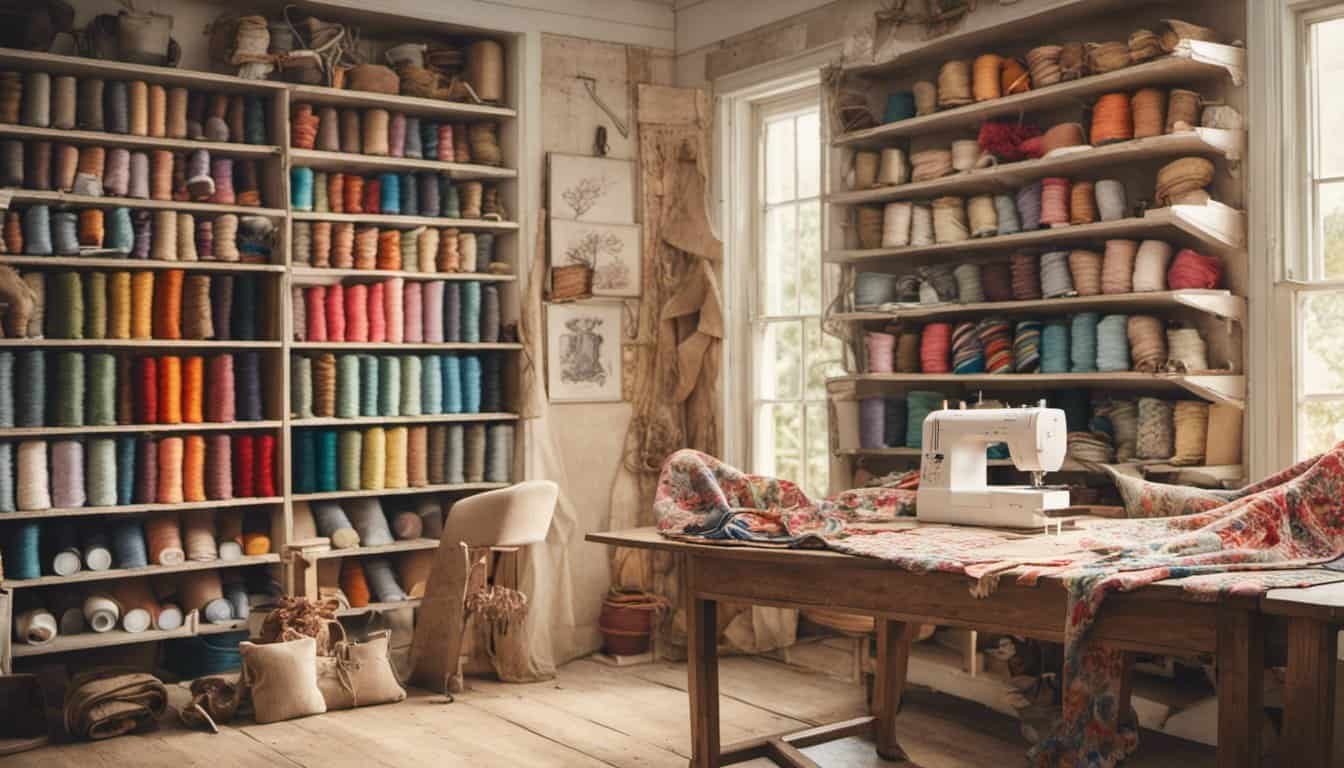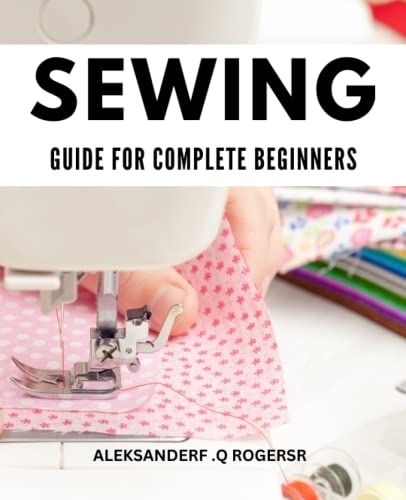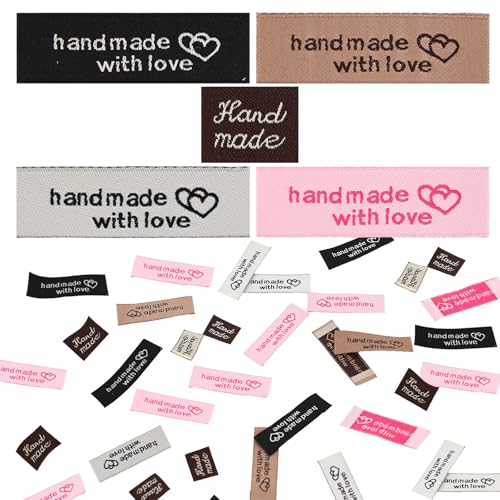Sewing a raincoat is such a rewarding project, but let’s be honest—working with waterproof fabrics can feel a little intimidating. I remember the first time I tackled it, I had so many questions about the right materials and techniques to use. The good news? With a few tips and the right approach, it’s not as tricky as it seems.
Choosing the perfect waterproof fabric is key to creating a functional and stylish raincoat. From lightweight options for drizzly days to heavy-duty fabrics for serious downpours, there’s a lot to consider. And don’t worry—I’ll share some simple tricks to make sewing with these materials a breeze.
Choosing The Right Waterproof Fabric
Selecting the right fabric is crucial for creating a functional and durable raincoat. It’s important to balance comfort, protection, and ease of sewing.
Types Of Fabrics To Consider
Nylon: Nylon is lightweight, durable, and commonly coated for water resistance. It’s a great option for raincoats that need to be packable.
Polyester: Polyester is heavier than nylon but offers better resistance to UV damage, making it ideal for long-term outdoor use.
PVC-Coated Fabrics: These are fully waterproof and highly effective against heavy rain but tend to be bulky and less breathable. Best for stationary or heavy-duty uses.
PU-Coated Fabrics: Polyurethane-coated fabrics maintain flexibility, are waterproof, and work well for everyday rainwear. They’re easier to manage when sewing compared to PVC.
Understanding Fabric Waterproof Ratings
Fabric waterproof ratings measure how much water a material can withstand before leaking. Ratings are expressed in millimeters (mm) of water pressure.
1,000-5,000 mm: Light rain protection. Suitable for drizzle or light showers.
5,000-10,000 mm: Mid-level water resistance. Ideal for most everyday raincoats.
10,000+ mm: High-performance waterproofing. Perfect for heavy rain or extended exposure.
Always check the manufacturer’s label for the rating to ensure the fabric fits its intended use.
Pros And Cons Of Popular Waterproof Materials
GORE-TEX: This breathable, waterproof fabric provides superior comfort but can be expensive and challenging for beginners to sew.
Oilcloth: A traditional choice for full water repellency. It’s easy to wipe clean but lacks breathability, making it less suitable for humid climates.
Ripstop: Lightweight and water-resistant, ripstop is a good balance between durability and ease of movement but may require reinforcement for heavy rains.
Vinyl: Affordable and completely waterproof, vinyl works well for ponchos but is stiff and difficult to sew without specialized tools.
Preparing To Sew Waterproof Fabric
Sewing waterproof fabric requires preparation to ensure smooth stitching and maintain the fabric’s waterproof qualities. I always focus on gathering the right tools and prepping the fabric properly before starting.

Essential Tools And Equipment
Having the proper tools makes sewing waterproof fabric much easier. I always recommend:
- Specialized needle: I use a size 90/14 or 100/16 microtex or denim needle to pierce tough waterproof materials cleanly.
- Teflon presser foot: This prevents sticking as the fabric moves through the machine. If unavailable, I apply tape under a standard foot.
- Strong thread: I prefer polyester thread for durability and resistance to water absorption.
- Clips instead of pins: For waterproof fabrics, I avoid pins to prevent punctures that compromise waterproofing. I use clips or binder clips to hold layers together.
- Seam sealant: I seal seams after stitching to ensure they’re watertight. A popular product like Seam Grip works perfectly.
Tips For Prepping Your Fabric
Proper fabric preparation reduces complications. Here’s how I prepare:
- Cutting technique: I use a rotary cutter and mat for clean, fray-free edges on slippery waterproof fabrics. Sharp scissors work as an alternative.
- Marking tools: I avoid traditional markers since waterproof coatings resist ink or chalk. Wax tailor’s pencils or masking tape work well for marking.
- Pressing precautions: High heat damages waterproof coatings, so I always test on scraps and use a pressing cloth if ironing. I prefer a low-to-medium heat setting.
- Pre-washing caution: Since some coatings can degrade with washing, I only pre-wash if the fabric’s care instructions specify it’s safe.
With the right preparation, sewing waterproof fabric becomes significantly easier, and the raincoat retains its protective features.
Techniques For Sewing A Raincoat
Sewing a raincoat requires tailored techniques to maintain the waterproof integrity of the fabric. I focus on methods that ensure durability, functionality, and a clean finish.
Best Practices For Waterproof Seams
Sealing seams properly is critical in keeping a raincoat waterproof. I always use specialized seam sealants or waterproof tapes after stitching to block any potential leaks. For sewing, I rely on flat-felled or double-stitched seams. These reduce bulk while ensuring strong, water-resistant joins. Adjusting stitch length is also important; I prefer slightly longer stitches, around 3–4 mm, to avoid perforating the fabric excessively.
« DIY Sewing a Door Draft Stopper: A Quick Fix to Keep Your Home Warm and Save on Energy Bills
Making a Hoodie: A Cozy Sewing Project You’ll Actually Love to Wear Every Day »
Heat-sealed seams offer an additional layer of protection. Using a seam roller or applying low, controlled heat can activate adhesive-backed tape, creating a solid barrier against moisture. I take care to follow fabric instructions to avoid damage during the process.
Choosing The Right Threads And Needles
Thread and needle selection directly affect a raincoat’s functionality. I stick to polyester thread—it’s strong, water-resistant, and bonds well with waterproof fabrics. Nylon thread is another good option, especially with heavyweight materials like PVC-coated fabric.
For needles, I rely on size 90/14 or universal styles with a sharp point. They pierce coated fabrics cleanly without causing fraying or snagging. When sewing thicker materials, I sometimes switch to a slightly heavier needle, like size 100/16, to maintain precision.
Avoiding Common Mistakes
Small errors can compromise the waterproof quality of the raincoat. One common mistake I avoid is pinning fabric directly, as this creates holes and reduces water resistance. Instead, I use fabric clips or low-tack tape when securing materials.
Applying too much pressure while sewing can also stretch or distort waterproof fabrics. I always adjust my presser foot pressure if needed and consider using a Teflon foot to ensure the fabric glides smoothly. Another oversight is skipping proper edge finishing—raw edges can unravel or wick water. A zigzag or overlock stitch secures these edges efficiently without added bulk.

Caring For Your Finished Raincoat
Taking proper care of your handmade raincoat ensures it stays functional, waterproof, and durable for a long time. Focus on cleaning techniques and re-waterproofing methods to maintain its performance.
Cleaning And Maintenance
I clean my raincoat gently to avoid damaging its waterproof coating. I recommend hand washing with cold water and mild detergent, especially for coated fabrics like PU or PVC. Never use fabric softeners, as they can erode the waterproof layer. For machine-safe fabrics, choose a gentle cycle and place the raincoat in a mesh bag to minimize wear.
Drying is equally important. Hang your raincoat indoors on a sturdy hanger to air-dry; avoid direct sunlight or tumble dryers, which can weaken or melt coatings. Spot clean with a damp cloth for small stains to reduce unnecessary washing.
Re-waterproofing Tips
Re-waterproofing maintains your raincoat’s ability to repel water. After several washes or extended use, I notice water beads less effectively on the surface. Use a spray-on or wash-in waterproof treatment that’s compatible with your fabric type, available at sewing or outdoor gear stores.
Test a small, inconspicuous area before applying the treatment. Once confident, evenly coat the entire surface in a well-ventilated space. Heat activation often improves the treatment’s effectiveness; refer to the product’s instructions and use a low-heat setting if safe for your fabric. Reapply periodically, depending on usage and exposure.

Conclusion
Sewing a raincoat can feel like a big project, but it’s such a rewarding experience when you see the final product. With the right fabric, tools, and techniques, it’s completely doable—even if waterproof materials seem intimidating at first.
Taking the time to prepare properly and pay attention to details makes all the difference in creating a functional, durable, and stylish raincoat. Plus, there’s something so satisfying about knowing you’ve made something that’ll keep you dry and comfortable in any weather.
If you’re ready to dive into your project, trust the process, enjoy the creativity, and don’t be afraid to experiment. You’ve got this!

















